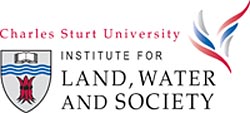- “So much emotional energy goes into dealing with this weed [serrated tussock], let alone the financial and physical energy which is also needed,” says ILWS PhD student Sonia Graham. Ms Graham is using serrated tussock as a case study in an examination the role of trust and power in relationships between landholders and government agencies in natural resource management programs. “The potential for conflict is obvious when you consider the impact on one landholder if the next door neighbour leaves the weed unmanaged.” Ms Graham has spoken to dozens of farmers in NSW and Victoria; attended meetings of local councils, regional weed committees as well as the respective states and National Serrated Tussock Working Groups to investigate how the relationships work at different levels.
- Alien or non-native ants are invading Queensland’s Fraser Island, placing the biodiversity on this World Heritage Listed island under threat, according to scientist Wayne Robinson. Mr Robinson, who has been studying the native and non-native ants on the island since 2004, has collected more than 250 species of native ants. He has also discovered that some of the alien ants, in particular the Big Headed Ant originally from Africa, have territories covering 10 to 30ha and are effectively forcing the native ants out.“Management on the island has revolved around whale watching, dingoes, and visitor numbers which has led to practices which favour non-native ants,” says Mr Robinson.
- PhD student Stacey Kopf is comparing the swimming ability of Australian native freshwater fish larvae to determine what impact different river flows have on the larvae and their survival rate. “Because Murray and Trout Cod larvae are born larger, are more developed and have parental care, they can swim faster than other larvae,” says Ms Kopf who is looking at the effects of flow parameters on fish in the Murrumbidgee River in NSW. “The larvae of Golden and Silver Perch are much smaller and drift like plankton. They don’t have much swimming ability.” Ms Kopf , who has already ‘swum’ the larvae in an ‘aquatic treadmill’, is currently swimming the larvae out in the field to see if her findings hold true. “Silver Perch larvae are the worst swimmers, which may be why they are not doing as well in rivers because their larvae can’t cope with the higher velocities of water due to irrigation flows,” says Ms Kopf.
The ILWS is a major research institute within Charles Sturt University. Its members undertake research in and across a range of social, economic, environmental and ecological issues.






Social
Explore the world of social